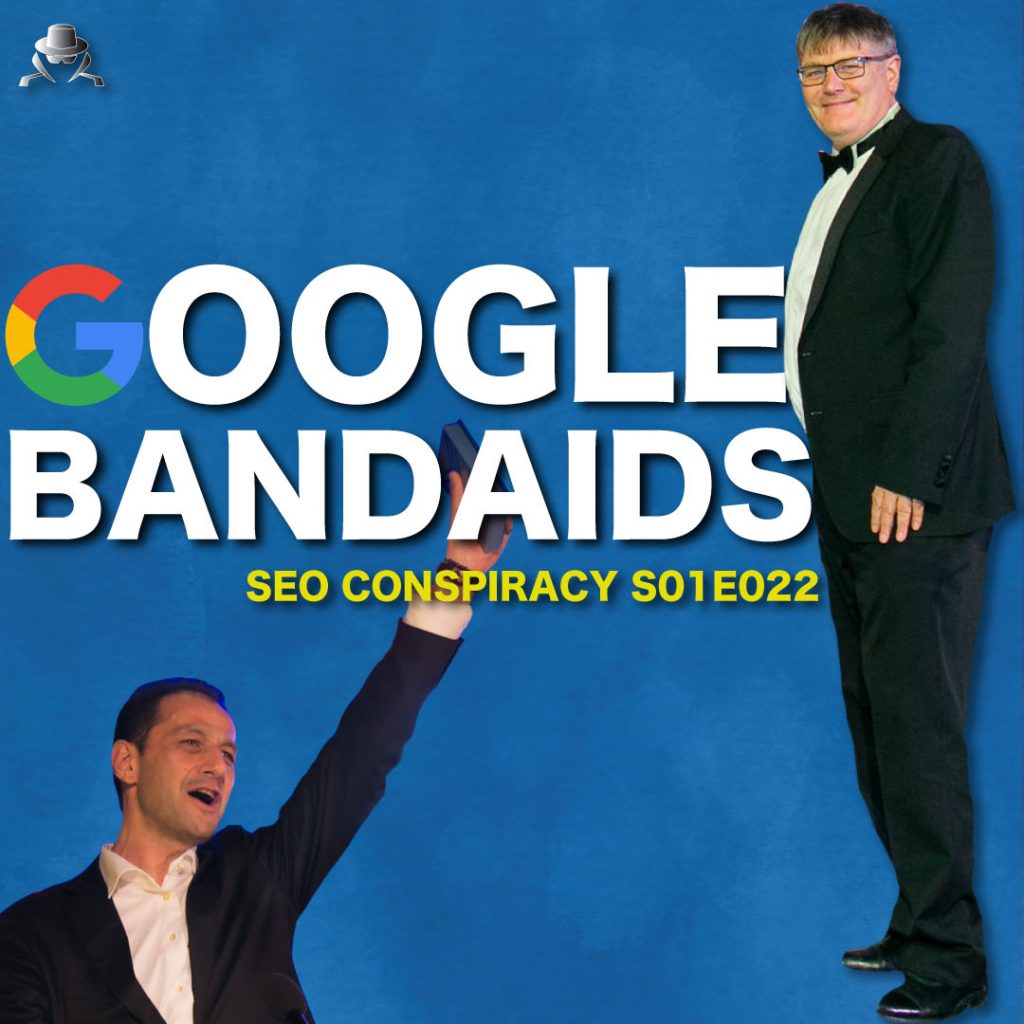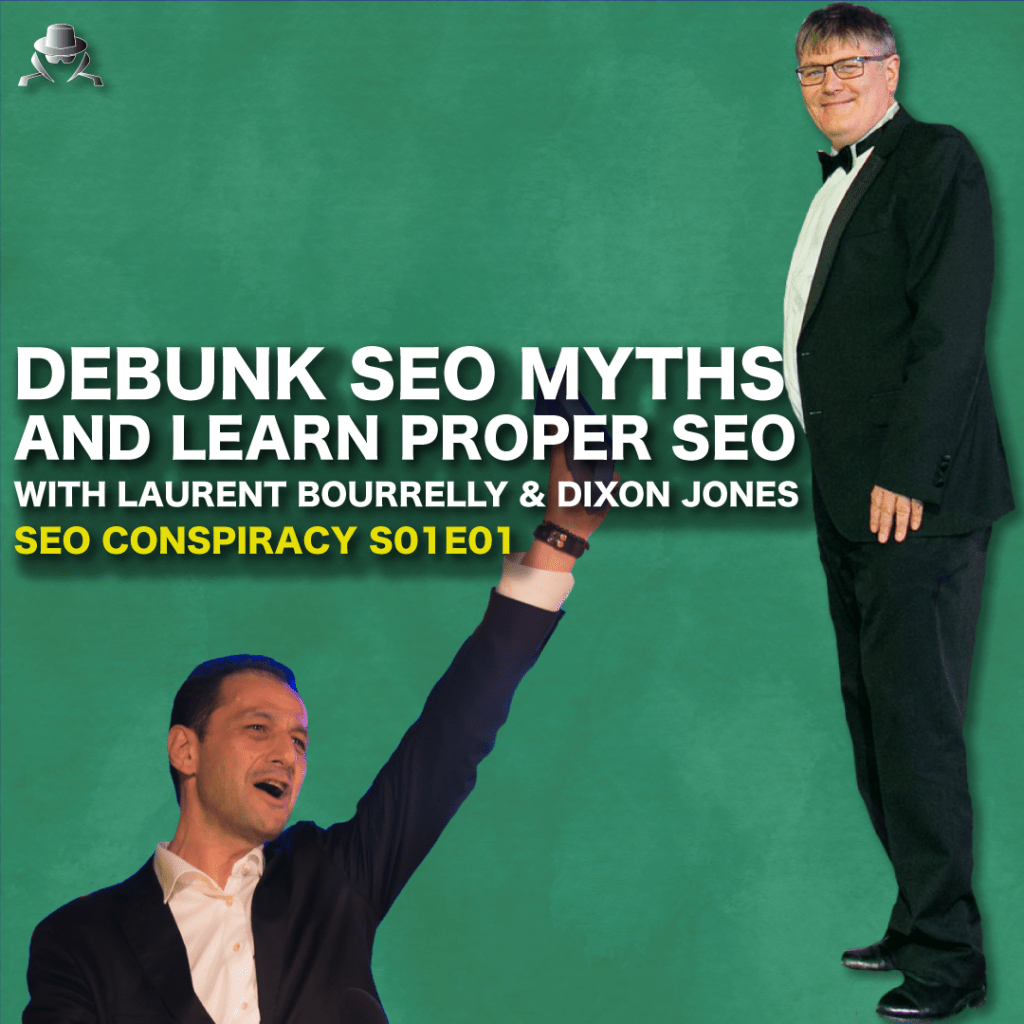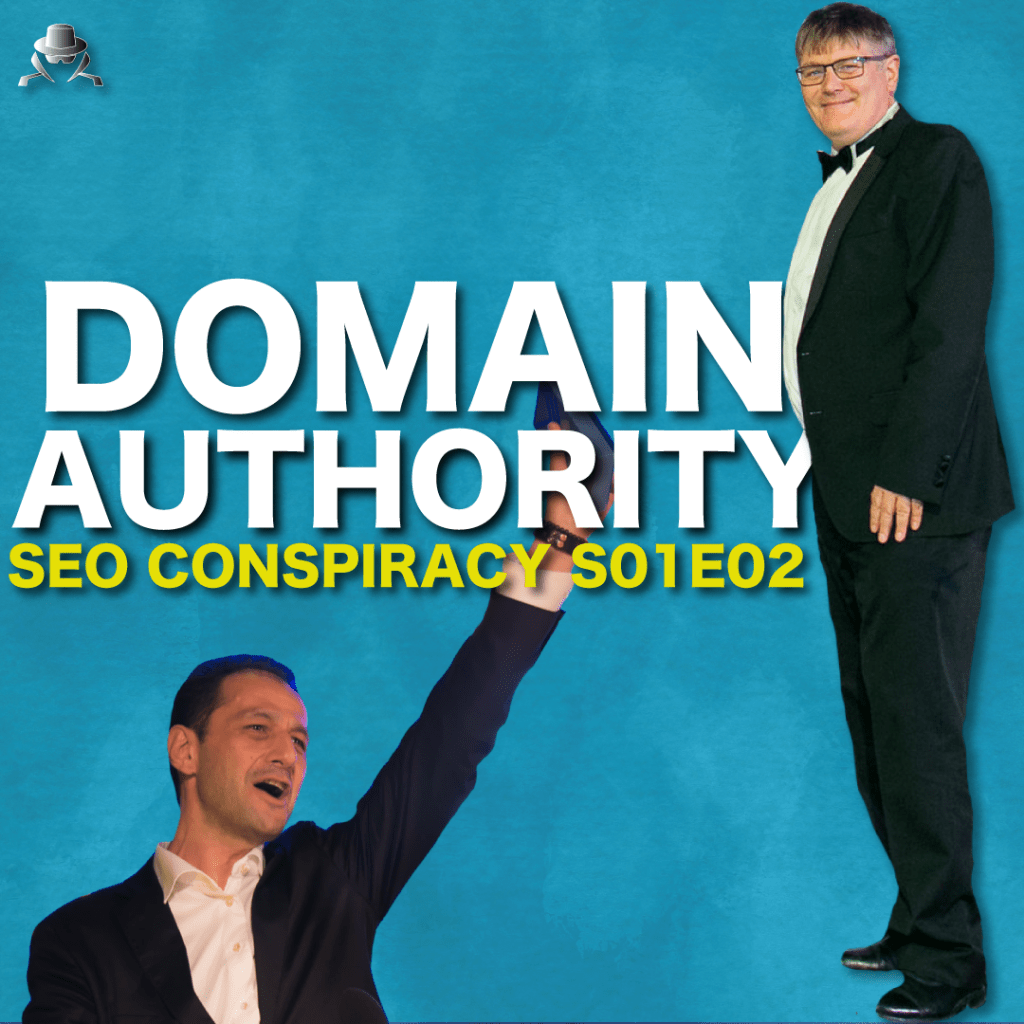Rel=nofollow, rel=prev/next, canonicals, etc. When Google tries to fix the web.
SEO CONSPIRACY S01E22
What are the Google bandaids?
What I call Google band-aids are all those rel=nofollow and next/prev, canonical. There’s a lot of them. Google tries to fix the internet.
ATTRIBUTE REL=NOFOLLOW
I’m really surprised about the fact that instead of abandoning the rel=nofollow, Google then started introducing this user-generated rel, rel=ugc and rel=paid or promo or whatever.
They’ve introduced it for anyone who doesn’t know these other parameters apart from nofollow on links which are all you know and then if they have at least finally said that they’re gonna take nofollow as an indicator not as a given and of course they had to.
I always thought what was really interesting with the idea of rel=nofollow is the idea originally was of course to allow people to put a link on a page but saying you shouldn’t pass PageRank through.
Which human beings don’t think like that when they’re writing content.
It’s because the very first thing that wordpress did is they made all of the common links nofollow.
Well that’s fine but if I put up a blog post about How Hot The Sun Is and then Brian Cox, the leading authority on astrophysics or whatever in the UK then comes in the comment and says I think you’re wrong if you go to this page it’ll show you exactly what’s happening that’s a much more important authoritative person.
It was a stupid idea and it’s an extra band-aid to have these extra parameters on there because real human beings that put real links don’t put any of that crap out.
Canonical bandaid
Canonical is not such a stupid band-aid, I think that was a problem that wasn’t created by Google.
I think the fact that we all started with websites saying www.yoursite.com and then some people did and some people didn’t I think canonical was a much more sensible, a better band aid than rel=nofollow.
It’s still a dangerous bandaid because you can really self destruct your website not using canonical right
Rel=nofollow is the condom of the web
The problem, the basic problem is that Google is lying to you. What happened is I made a test at the beginning and I proved that it was not respecting nofollow it was going over it. Then a couple years later I did the test again, a very rigorous test.
It was stopping at nofollow and now again is going over nofollow.
so what is it doing with it? if it’s not paging PageRank?
Google wants to see everything I mean yeah. what is it doing with it up to you to figure it out.
Rel=prev/next
What I think is very bad is the rel=prev/next. Google put it up so people put it in place when in fact it was just some random tweet from some Googler saying “oh by the way, we never were able to figure it out we never used it”.
What’s interesting tho is that it shows you that they’ve got lots of
little working units trying to figure out stuff when their engineers are sitting there trying to make a little bit of a little part of their world better and just because they’ve created the ability to do something doesn’t mean to say that they use it in another part of the system.
If you’ve got a chapter of a book then the rel=prev/next is interesting.
I’ve got on the blog a semantic search guide which is many many pages and it links them all together because we wanted to maybe turn it into a book one day and when I have some kind of structure to it to start with I also don’t want to have it all is one long big article because it’s too much for humans to take in a one time and because I want those pages to rank for those specific articles are about so of course I’ve got this continuity.
I feel sad that Google dropped the prev-next idea because it ties ideas together and you talk about the idea of this is related to that and Google’s all about you know object A is related to object B and you
know that the prev-next ones should have been able to connect those ideas really effectively. there wouldn’t have been a good band-aid if Google had used it.
again just a guy in my opinion try to work without these band-aids there’s a way if you can’t figure it out yes but if you take all those band-aids one by one there is a way to do it without canonical or everything hreflang.
sometimes it’s useful and it’s the most the easiest way to do it but I think that if we gotta give credit to Google, the web sites a lot better than when we started and Google has a big part to play in that so yeah on one hand, I hate the way they put up certain of those band-aids but try to avoid them because you don’t know what the future is made of and at least it’s safe proof.
if you can figure out, there’s a way: “Les Règles de l’Art”. Doing things by the book.
Without any band-aids, you can do everything. We’ve done it before the bandaid existed
I’m gonna give you a very specific example: Magento.
I need to write down the trend of not putting an
extension not a slash or no .something at the end of the URL.
That’s an interesting topic but Magento got the URL slash and not slash with a canonical pointing to the version with the slash and a canonical pointing to the version without the slash.
that’s one of the best way to auto-distract yourself.
Of course, it’s one of the very good band-aids but there is a way to work without it and if you do it wrong it could really be do some negative seo to your website.
UTM PARAMETERS
I’m not a Magento nor WordPress fan but of course they have fix that and then basically whichever version you put it’ll 301 to one specific version each time now but you still need the canonical because the ad guys you know the PPC parts they’re adding all these UTM these tracking urls parameters to the end of URLs left run center and that’s another really easy way to get yourself loads and loads of duplicate content.
Google will understand if it’s a UTM parameter because they know what that is but so many other parameters or other tracking systems, affiliate tracking systems and/or things that are trying to change the size of the picture when it loads or other things those parameters Effectively changing the content on the webpage a little bit but not enough for you to want both versions indexed separately within Google so you still need a canonical.
I think that’s an important band-aid because duplicate content is probably the number one source of negative seo.
Log Analysis
You really need to monitor what’s going on because question mark and whatever goes next is evil. That’s why and I just mentionned it, a lot of those tracking guys, a lot of them need that question mark and whatever comes next but on websites that don’t need this type of tracking you can try to put a question mark it’s not gonna work it goes to a 410 or whatever you want.
That made a huge problem with Ajax, because they were using the hash symbol and delivering completely different content.
The hash sign is a dead stop and so anything that comes after a hash should be absolutely ignored by any crawler. Interestingly you can then use it for very interesting tracking if you wanted to because it gives a parameter that’s not going to be affected by the crawler so once again if you changed your question mark by a pound sign or a hash sign it could be good but it could be very bad if you got a lot of tracking and those guys used the question mark.
It would make that really bad because every link from Facebook to your website will have a facebook tracking ID on to the link so if you’ve got a hash in the URL then you’ve then it’s all gonna fall apart.
Because you’re then trying to put a parameter after a hash through which is probably a very bad thing to do.
Listen to the podcast
Watch the video
Latest posts



